Are Great Danes Good Guard Dogs? (7 Traits)
Great Danes are known for being gentle giants, which makes them excellent family dogs.
A typical Great Dane stands about 30 inches at the shoulder and can weigh up to 175 lbs, which is enough to scare off any intruder!

However, despite their massive size, they are known for their sweet disposition and gentle, child-friendly nature. In this blog post, we’ll take a closer look at this magnificent, regal breed and whether they make good guard dogs.
Great Danes And Guarding
Despite their size and their loud, intimidating bark, Great Danes are not known to be good guard dogs. They are gentle and easy-going, and while they will protect their family if needed, they typically don’t have aggressive tendencies and are unlikely to bite or attack, even in defense.
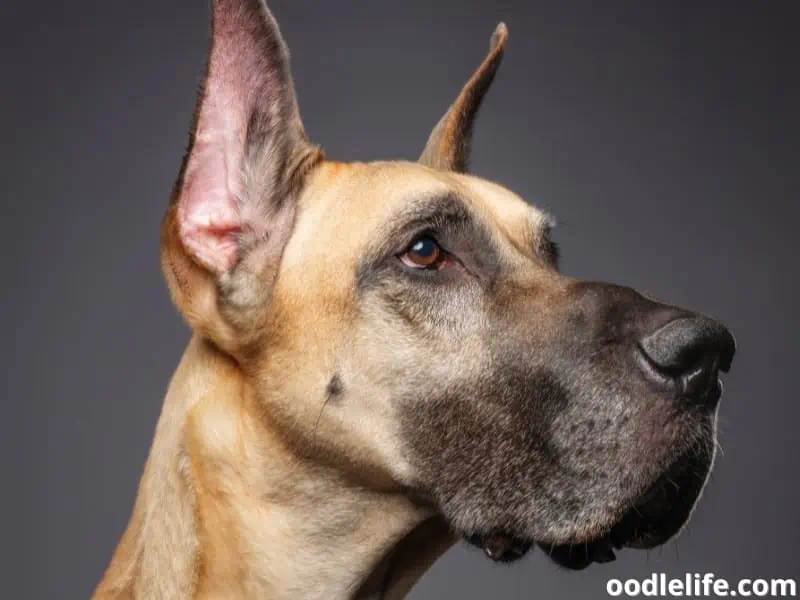
They will make better watch or alert dogs. Their loud, intimidating bark and massive size are enough to deter most people that don’t know the breed well.
The Great Dane, also known as the Deutsche Dogge or German Mastiff, has a long and colorful history. This type of breed is thought to be descended from Irish Wolfhounds and English Mastiffs, with ancestors that go back centuries.
The Great Dane is said to have originated in Germany during the sixteenth century, where it was bred as a brave hunter of wild boar and other large game animals.
Over time, the breed became popular for its appearance and loyal temperament too. Today the Great Dane remains an iconic breed, beloved by families all over the world for its faithful and gentle nature.
Why Are Great Danes Not Good Guard Dogs?
Great Danes are protective dogs that will alert you if anything was amiss or defend their family if needed. However, despite their size, they make better alert dogs than guard dogs. Here’s why!
1. Not Aggressive
Great Danes are not naturally aggressive, which is why it might be difficult to teach them to go against their nature. For this reason, the majority of pet owners do not train them to be aggressive toward strangers or to exhibit guard dog-like behaviors.
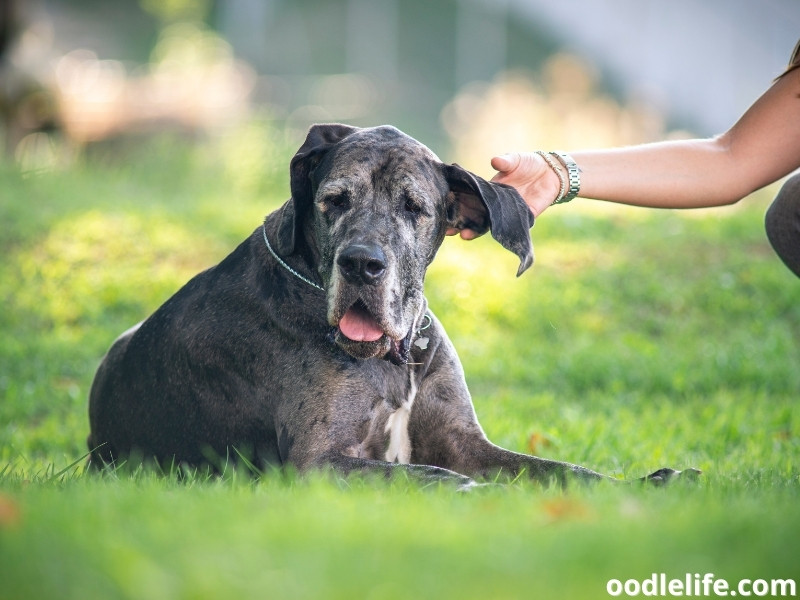
2. Not Mistrustful
This happy-go-lucky breed does not naturally patrol a particular area on its own and thinks it is its job to defend the property. They are friendly, affectionate dogs that get on well with strangers and other animals.
3. Unlikely to Attack
Though big and scary looking to intruders, Great Danes typically don’t attack anyone, even if someone is on the property.
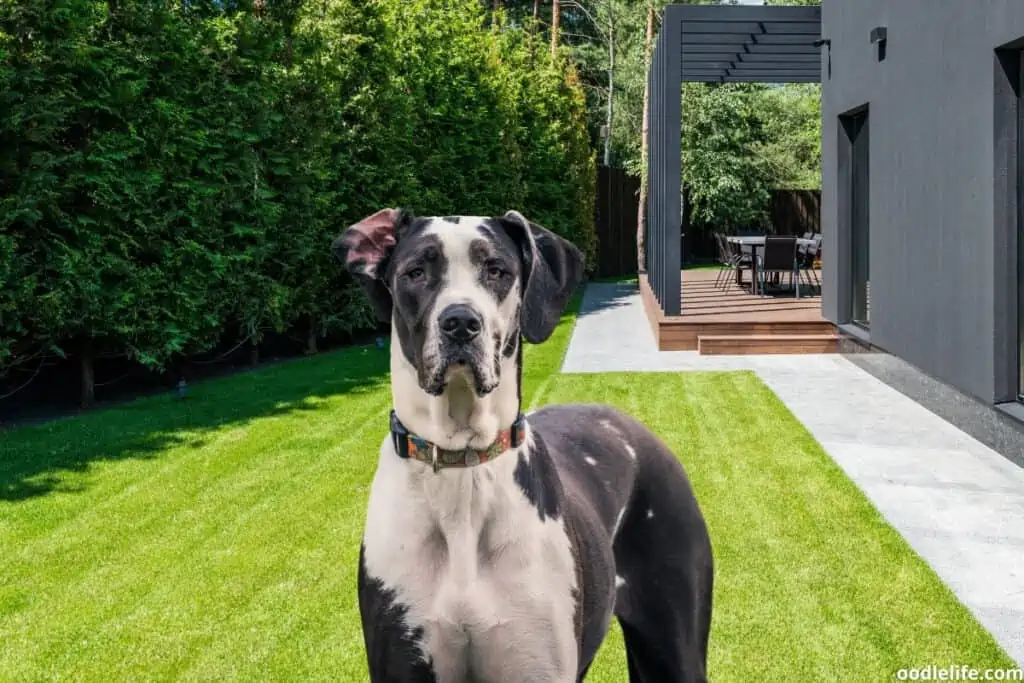
For this reason, many pet parents with children in their homes tend to opt for this breed. In addition, it is very difficult to train them to attack as well as it goes against their gentle nature.
4. Loyal and Friendly
Bred to be companion dogs, Great Danes are loving and friendly towards family and even new people they meet. Whether they meet children, strangers, or other animals, this breed will have a friendly attitude.
They are not on high alert all the time, making them less of a guard dogs. They may be aloof to strangers, but they are unlikely to attack or show aggression.
5. Patient and Calm
Despite the large size, Great Danes are surprisingly friendly, calm, and patient. Naturally, you do not want a guard dog to be very calm and easy-going. Guard dogs are typically calm, yet protective dogs that have a high guard drive and are not afraid of confrontation.
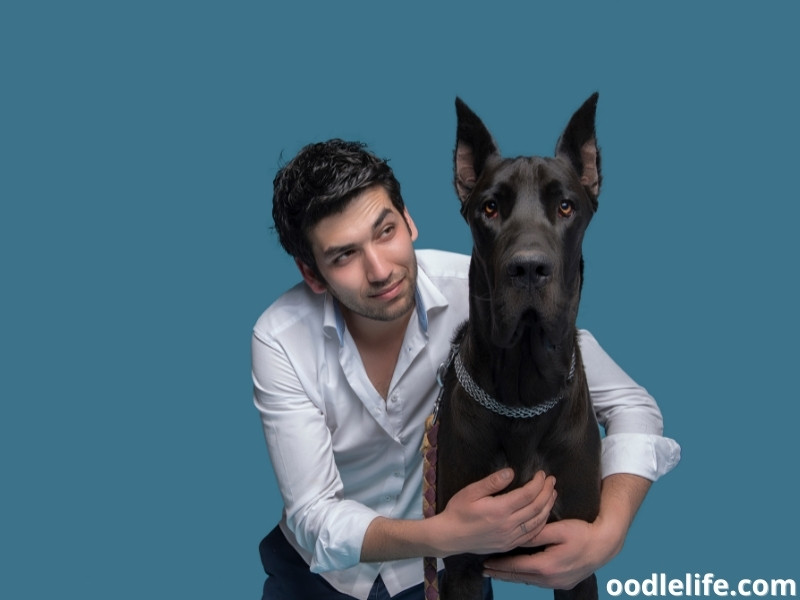
Traits that Make Great Danes Good Watch Dogs
Originally bred as hunting dogs, Great Danes were used primarily for guarding with the introduction of guns. Even though their guarding instincts have been bred out, there are still some traits that make them exceptional home guardians.
1. Extremely Loud Bark
Great Danes tend to have an unusually loud bark. The loud bark alerts the household of a possible threat and frightens off the intruder.
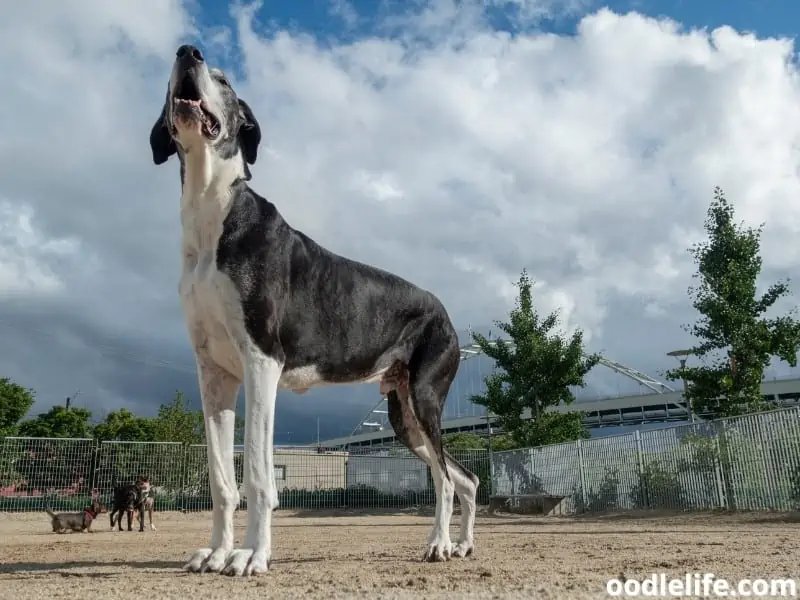
The deep and loud bark is useful for people who have huge properties since the bark can be heard even from a distance. It allows you to react in time and alerts you to take appropriate actions.
2. Large Size
Commonly measuring between 28 and 32 inches at the shoulders and weighing around 100 and 200 pounds, Great Danes are one of the largest breeds in the world. Attackers and intruders that don’t know the breed will be instantly intimidated by the massive size.
They also have an intimidating appearance, particularly for people who are not used to being around them.
3. Confident Breed
Be it a puppy or an adult, Great Danes are confident dogs and are sure of themselves. They WILL sound the alarm if they feel that something is awry.
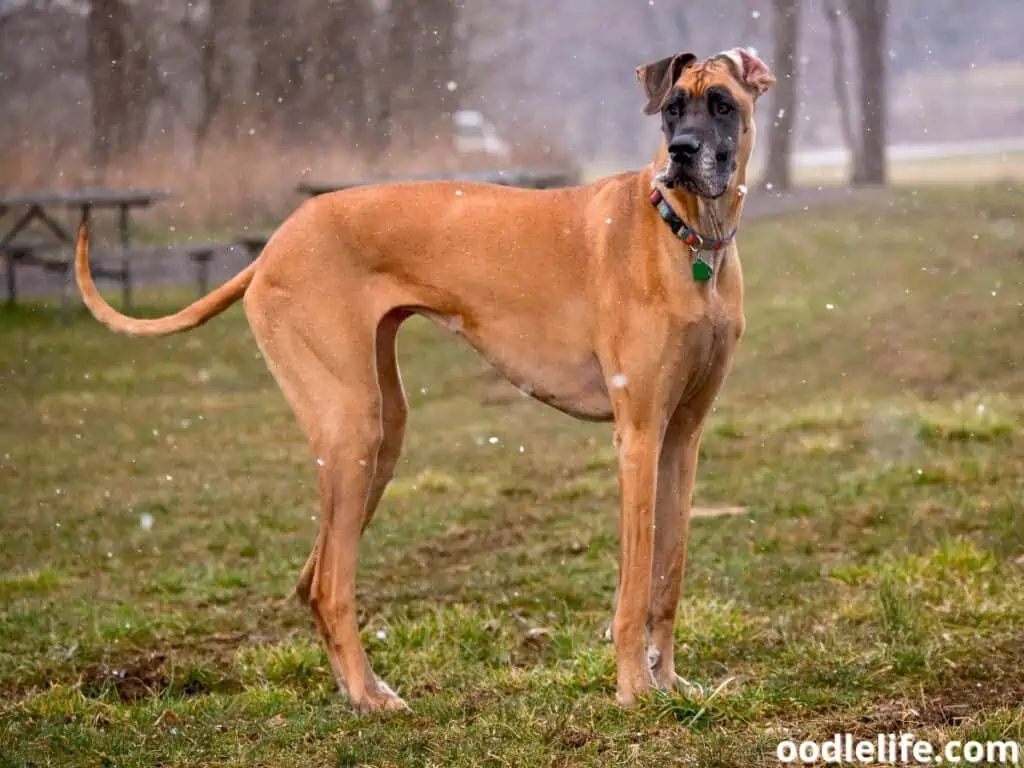
4. Peaceful Temperament
Dogs with a peaceful temperament such as Great Danes tend to be less reactive to every perceived threat. They are unlikely to bark at any ol’ thing like a squirrel or falling leaf.
Owners of dogs that bark excessively often ignore the barking but when a Great Dane DOES bark, it is usually for good reason. Their calm temperaments make it unlikely that they will bark at your friends or regular visitors, so when they use their booming bark, you might want to check out what they are barking at.
5. Highly Observant and Attentive
When it comes to vigilance, Great Danes are ranked pretty high by the American Kennel Club. This breed is considered excellent alert home guardians. They are attentive to real or perceived threats and will readily inform their humans.
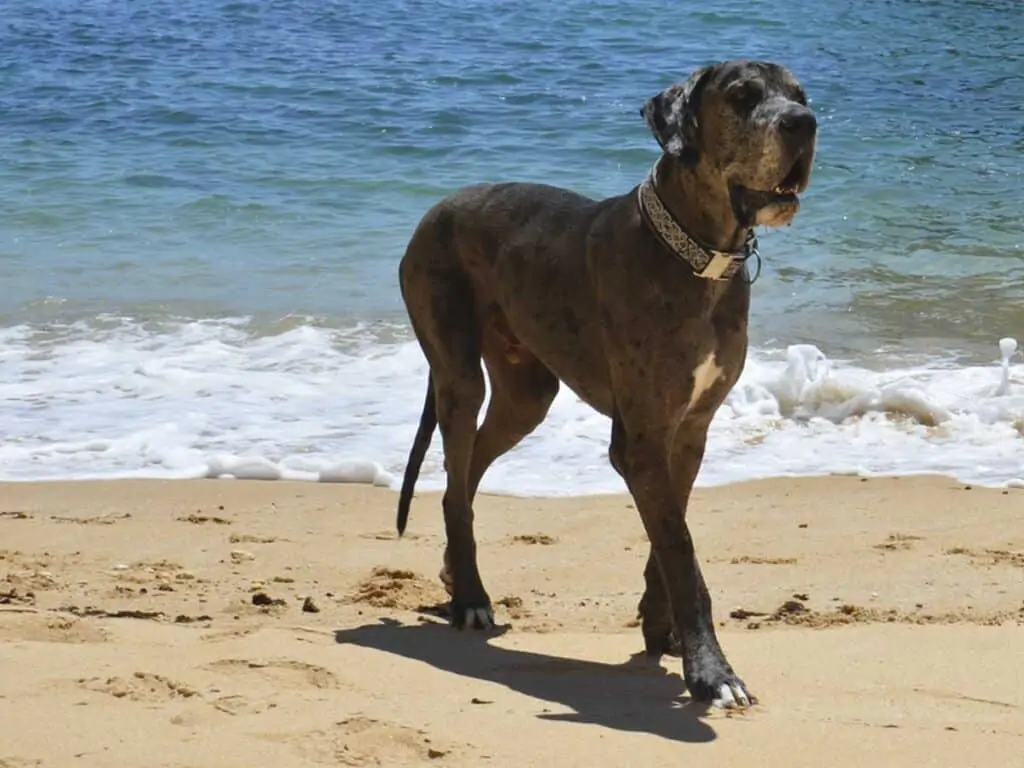
6. Activity-Oriented
Great Danes are large and naturally protective of their human family, which makes them an excellent breed to become watchdogs. They have a higher need for mental stimulation and thrive when they have an activity or a job to perform.
If you train a Great Dane to watch or guard as a duty, they’ll happily embrace their new job. However, they will need to be specifically trained as alert dogs.
7. Friendly but Reserved With Strangers
When it comes to loving their human parents, Great Danes are super friendly and excellent companions. However, they tend to be a bit more aloof with strangers and have a healthy skepticism toward newcomers.
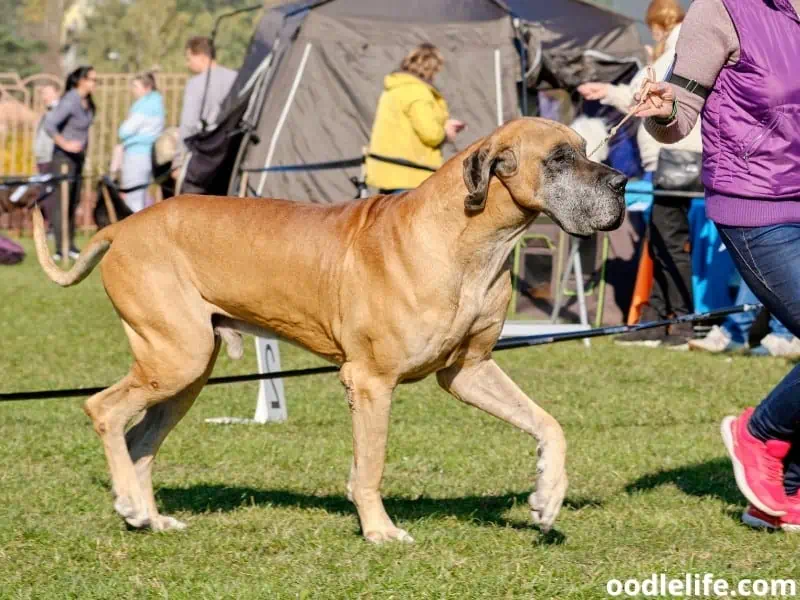
They might not attack, but they most certainly will be wary around them.
Great Dane Watch Dog Training Tips
Although guard dog instincts are typically not present in Great Danes, you can still teach your dog to guard your home. With a little bit of patience and consistency, you’ll make a guard dog out of your Great Dane yet!
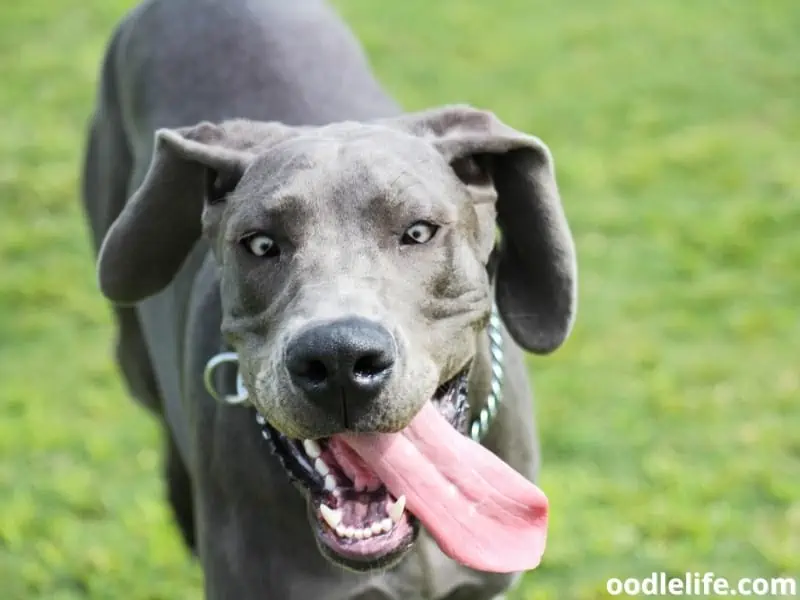
1. Start Simple
The first step is to start out by teaching your Great Dane basic obedience commands like sit, stay, come, and lay down. They must understand these commands clearly before moving on to more complex tasks such as guarding the house.
Mastering these basic commands will help them understand the rules of the household and give them a sense of structure.
After they have mastered some simple commands, teach impulse control to maintain discipline. For example, they sit and stay for their food, for a treat, or to go for a walk.
The simplest way is to hold a treat out and make them leave it alone until you give the release word like “okay.”
2. Set Boundaries
After your dog has mastered basic obedience commands, it’s time to start setting boundaries for their behavior in your home. This includes off-limits areas, such as certain furniture or rooms in the house.
This will help them understand where they are allowed to go and where they should not enter without permission. Teaching these boundaries will strengthen their sense of loyalty towards you and make them less likely to wander off or allow strangers into your home without permission.
3. Training
Once you have established basic obedience commands and set boundaries for your dog, you can then slowly start some consistent training.
Start by introducing them to people outside the family that you would like them to be comfortable around like close friends or neighbors. You can also teach them specific behaviors that will alert you when an intruder is present, such as barking or sitting in front of the door when someone enters the house.
If a stranger comes to the door and your Great Dane barks, reward them immediately to encourage the behavior. With enough practice over time, they will be able to recognize who is welcome in your home and who is not.
Once your dog has learned the behavior that barking at strangers surrounding the property is a desired behavior, you can add more distractions.
For example, have the stranger bribe your dog with treats or some other distractions to see how your Great Dane performs. Before doing this, test the distraction on your dog first to make sure he doesn’t abandon his post and job.
Final Thoughts
Great Danes may be the largest dog breed in the world, but they are gentle giants with very few aggressive tendencies. They also are a loving, friendly breed that dislikes confrontation, making them unlikely to attack an intruder.
However, they can make good alert dogs and sound an alarm if something is off. Their deafening, booming bark and massive size might be enough to scare off all but the most determined unwanted visitor!